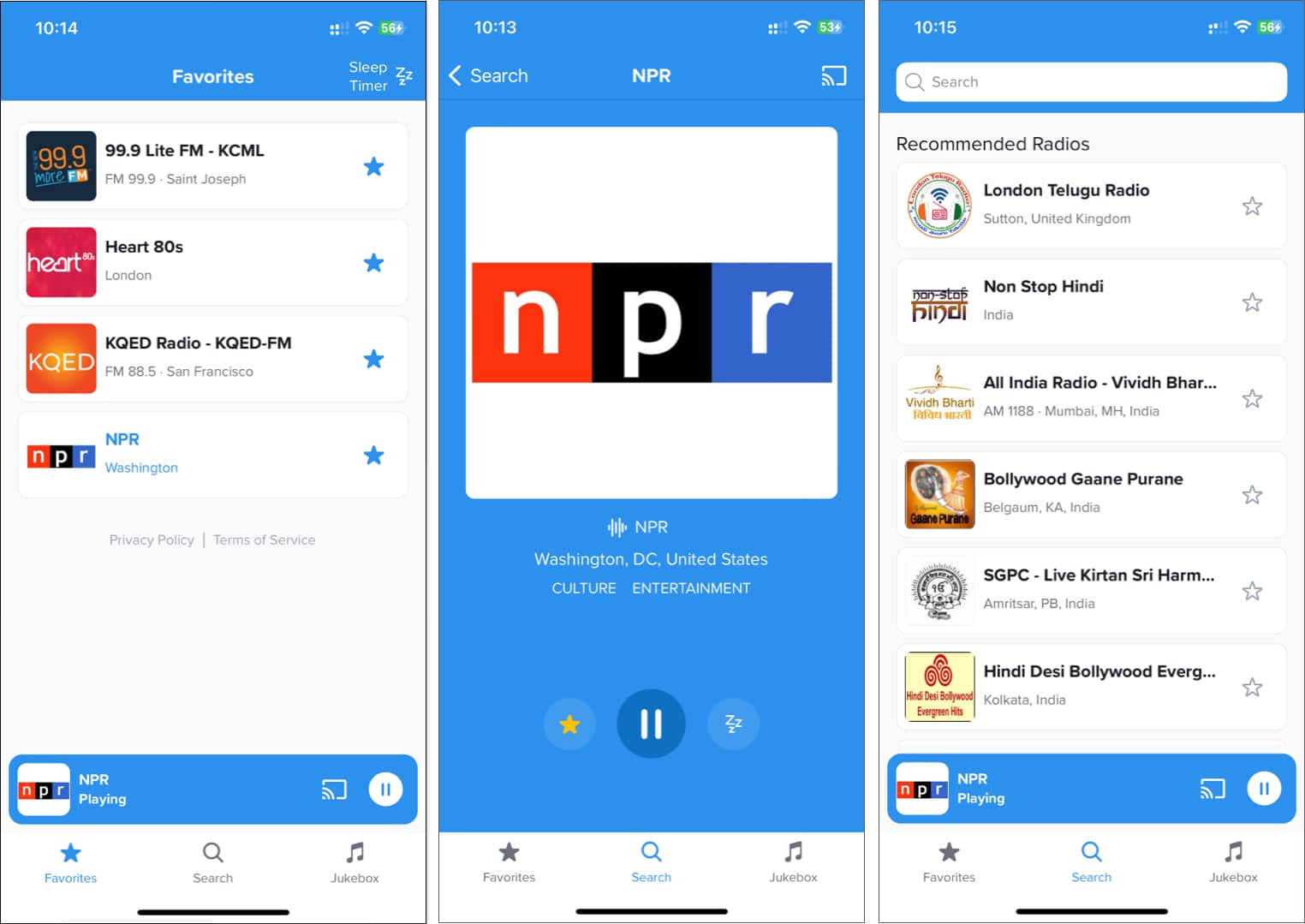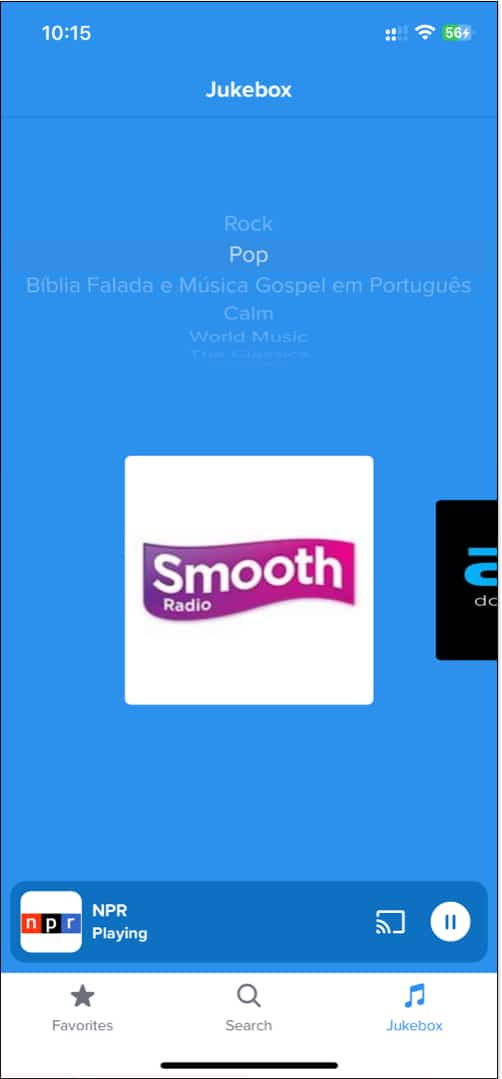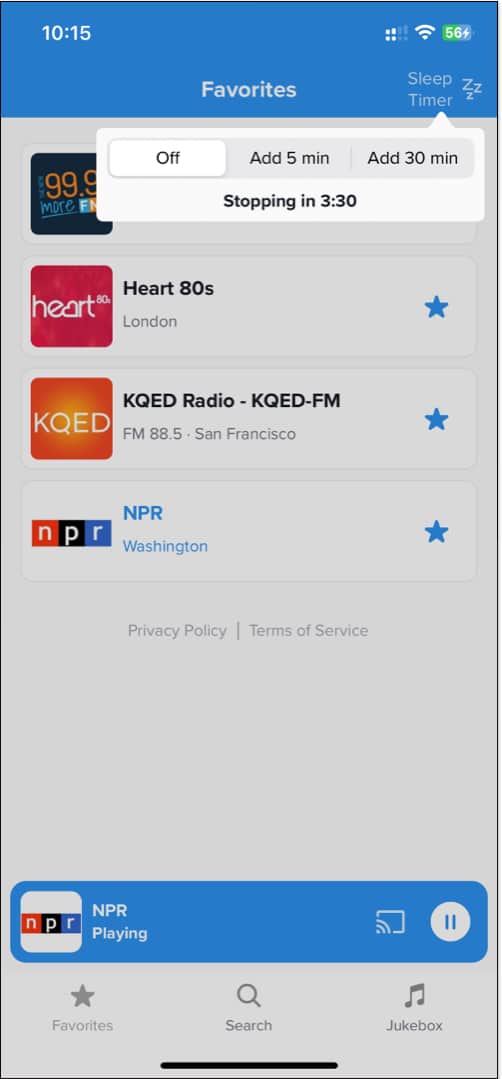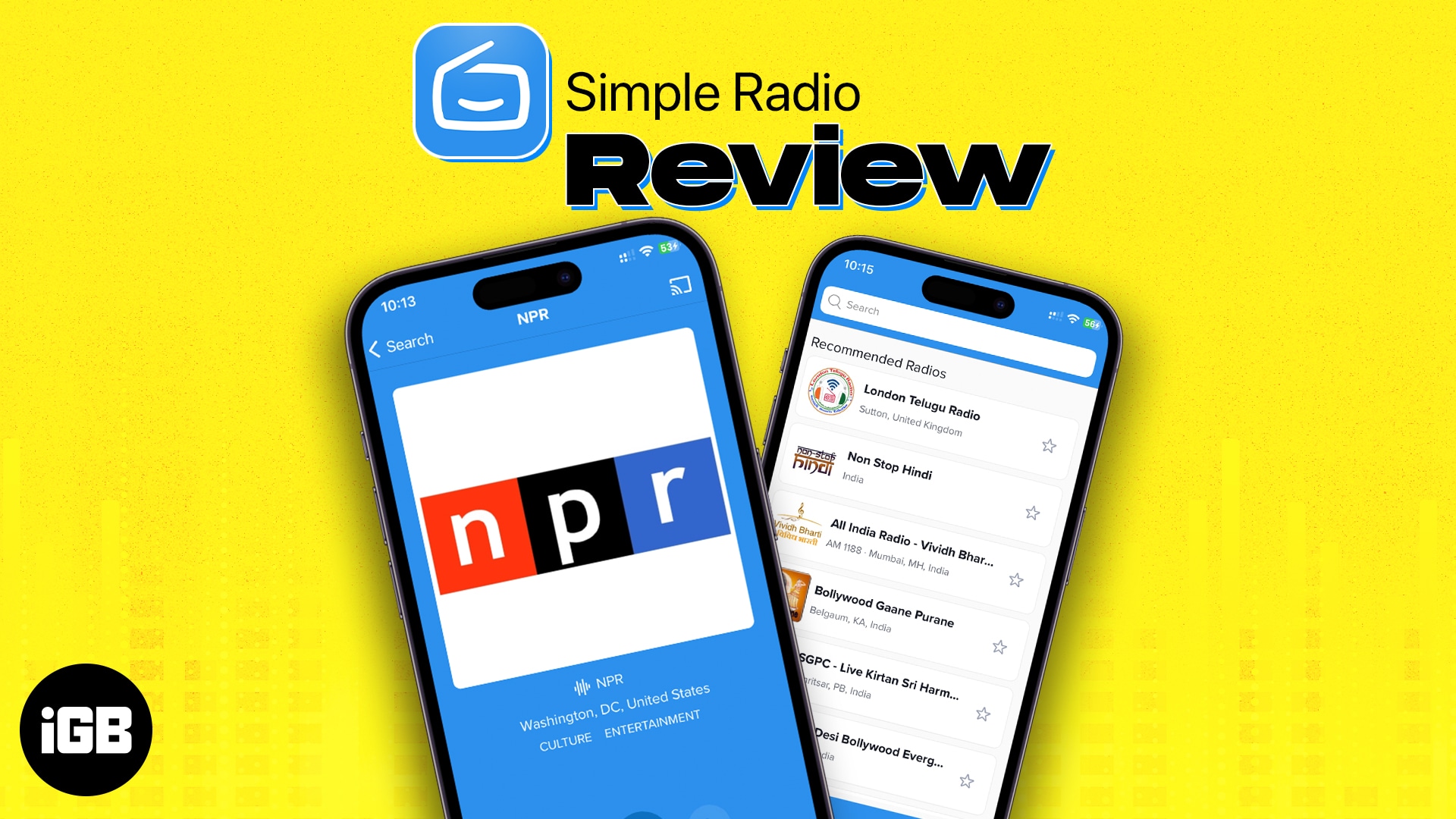Simple Radio is a reliable and elegant radio app for iPhone, iPad, and Apple Watch that offers a pleasant experience. It’s smooth as you like it and provides access to a range of stations from across the globe.
Pros
- Minimal and straightforward app
- 70,000+ radio channels
- Sleep timer
Cons
- Addition of more features would encourage more users to upgrade to the premium version
Price: Free (In-app purchases start at $1.99)
If you’re a radio fan, listening to your favorite radio stations can be staggering, with some apps asking you to go through the sign-up process and subscriptions. With so many options for Radio apps on the App Store, you might be overwhelmed.
What if I told you about an app that lets you listen to your favorite radio stations without signing up for it? Yes, it’s possible with Simple Radio.
Simple Radio – First impressions
Simple Radio, as the name suggests, is a basic yet handy app that lets you listen to radio stations worldwide. Whether you’re looking for sports, music, or news, finding the right radio station with its clean interface for any occasion is a breeze.
I used this app on my iPhone 12 for a couple of days to see how it performs in the flesh, and here’s my full review of the Simple Radio app on iOS.
Features and user interface
When you open the app, you’ll notice that you don’t have to sign up, and you’ll get directed to the app’s favorites page, where it’ll ask you to search and favorite some radio stations. Besides, the user interface doesn’t have many options to confuse users, keeping it minimal.
It’s so straightforward that even if you’ve no experience using a radio app before this one, you can still pick it up and use it like any other app. Even though it looks simple, you can find a few features underneath this app.
Live Stations

The Simple Radio app has more than 70,000 live radio stations from over 200 countries. The best part is that, unlike other live radio apps, whether you live in the UK, USA, India, or any other country, you can listen to those radio stations for free without paying for a subscription. Moreover, you can set some of your favorite channels to access them quickly from the Favorites tab.
Jukebox

Even though you can listen to many radio stations, you can check out the Jukebox feature if you want to listen to music. Different genres, like Pop, Rock, Country, Latin, and many others, are available. Once you select the genre, you can choose from various channels available in this genre. Besides, the audio quality is appropriate for a radio jukebox. Moreover, you can cast using this app from your iPhone to Google TV, Chromecast, or devices that support casting.
Sleep Timer

The Sleep Timer feature on this app is a premium feature, but you can get a glimpse of it through the 7-day free trial that the app provides. It allows you to set a sleep timer that switches off after a specific time. It helps you save battery when you doze off while listening to songs or a radio station.
Should you get Simple Radio?
My simple answer would be yes! You can go for the Simple Radio app. Simple Radio is reliable and one of the easiest ways to listen to your favorite AM, FM, and online stations. It is also available on iPhone, iPad, and Apple Watch, so you don’t have to worry if you have an iPad and control it through Apple Watch. Moreover, after using this app, I wondered if an app could be this simple yet has good features.
Pricing
Most of the app’s features are free, but you’ll receive ads then and now. You’ll need to subscribe to the Unlimited plan that costs $14.99/year, which removes ads and provides access to the Sleep Timer feature. However, Simple Radio provides a 7-day free trial, so you can decide before purchasing.
🗣️ Our site is supported by our readers like you. When you purchase through our links, we earn a small commission. Read Disclaimer.

